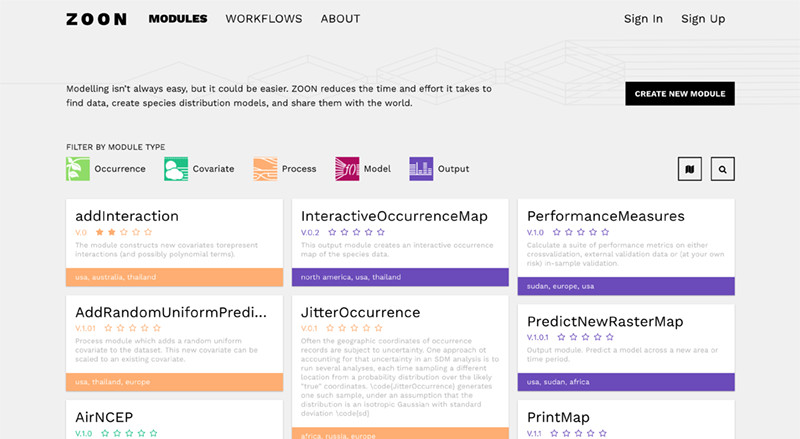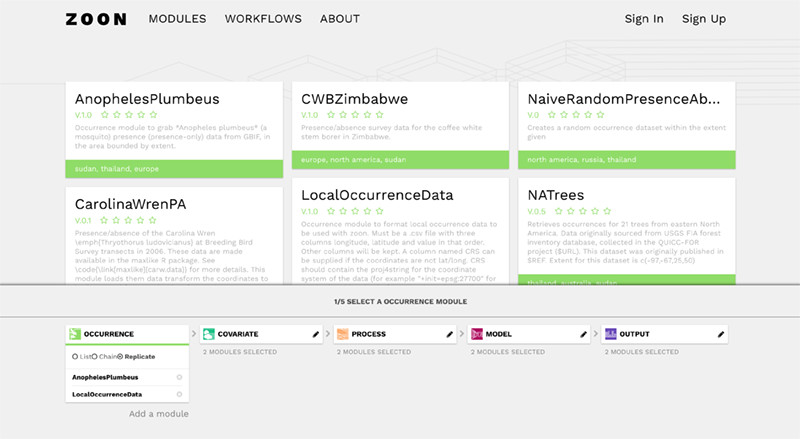Case Study: Building A Community For Modellers And Researchers
An important part of any scientific process is recording the method so anyone can replicate the study, test the theories, and compare results. Unfortunately, traditional publishing and modelling practices don’t always make it easy to access, understand, modify or replicate studies that use Species Distribution Modelling. To change this, a group of modellers created Zoon—a big library of R models relevant to biodiversity and conservation—that can be easily searched and used to answer questions such as, “how will species distribution change if the world keeps getting hotter?”
I’ve known the founders of Life on Mars for quite a few years, since we studied and hung out together. So when Vizzuality needed someone to work with us they seemed like a natural choice.
I knew their skills, their culture and knew we could trust them. It was with great pleasure that I got to confirm all that. They allowed us to, in a time of shorter capacity, continue to deliver high quality work. Product Developer at Vizzuality


Collaboration with Vizzuality
Life on Mars has been working with Vizzuality on a number of projects this year. When the Zoon team decided they wanted to create a new online home for their library that would encourage more people to contribute to it, they came to Vizzuality for help. They led the discovery phase to develop a design and vision for the project, and then handed over the build to us. Developed with an agile process, the new Zoon is now easier to search and add to.
Design and Vision
If you want to build a place that people will keep coming back to, you have to give them incentives to do so. With Zoon, those incentives include an enhanced search function, a better tagging system, and an easier-to-use reviews section. With pressure on scientists to make their research open, a place like Zoon makes it easier for them to share their work and build upon the models other people are sharing. If we can pool our knowledge and experiences in this way, we’ll find the answers and solutions to the world’s most important issues far more quickly.
Technology choices
Vizzuality’s discovery phase and user testing had provided a clear picture of what was needed from the build and Life on Mars brought it to life. We used a React+Redux frontend running on a Rails backend with a Heroku deployment.
React is a relatively recent entrant in the front-end development framework arena. Built and used by Facebook, it facilitates responsiveness, component reuse, and encourages a modular and maintainable progressive web application structure. Together with Redux, a state management technology that is a perfect fit for React, adding new features to Zoon should be a breeze.
Heroku is a flexible web hosting platform which allows developers to quickly deploy applications without having to invest time in setting up infrastructure like database and application servers. Using Heroku allowed us to hit the ground running, deploying early and regularly in order to maintain maximum alignment between all stakeholders involved.
GitHub integration
The Zoon project keeps a public GitHub repository of the modules which have been submitted. In order to display them on the website, we built a process which downloads the modules repository every day. It then inspects the code of each module to determine how to properly categorize and tag it, and updates the database.